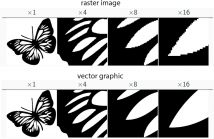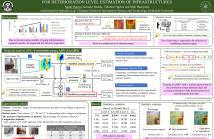
- Read more about RETINEX UNDERWATER IMAGE ENHANCEMENT WITH MULTIORDER GRADIENT PRIORS
- 1 comment
- Log in to post comments
We develop a variational retinex algorithm for enhancing single underwater image with multiorder gradient priors of reflectance and illumination.
- Categories:
 24 Views
24 Views
- Read more about Recover The Residual Of Residual: Recurrent Residual Refinement Network For Image Super-Resolution
- Log in to post comments
Benefiting from learning the residual between low resolution (LR) image and high resolution (HR) image, image super-resolution (SR) networks demonstrate superior reconstruction performance in recent studies. However, for the images with rich texture information, the residuals are complex and difficult for networks to learn. To address this problem, we propose a recurrent residual refinement network (RRRN) to gradually refine the residual with a recurrent structure.
- Categories:
 8 Views
8 Views
- Read more about A Diagnostic Study of Visual Question Answering with Analogical Reasoning
- Log in to post comments
- Categories:
 7 Views
7 Views
- Read more about RETINEX UNDERWATER IMAGE ENHANCEMENT WITH MULTIORDER GRADIENT PRIORS
- Log in to post comments
We develop a variational retinex algorithm for enhancing single underwater image with multiorder gradient priors of reflectance and illumination. First, a simple yet effective color correction approach is used to remove color casts and recover naturalness. Then, a variational retinex model for enhancing the color-corrected underwater image is established by imposing multiorder gradient priors of reflectance and illumination.
- Categories:
 8 Views
8 Views
- Read more about GHOST-FREE HDR IMAGING VIA UNROLLING LOW-RANK MATRIX COMPLETION
- Log in to post comments
We propose a ghost-free high dynamic range (HDR) image synthesis algorithm by unrolling low-rank matrix completion. By exploiting the low-rank structure of the irradiance maps from low dynamic range (LDR) images, we formulate ghost-free HDR imaging as a general low-rank matrix completion problem. Then, we solve the problem iteratively using the augmented Lagrange multiplier (ALM) method. At each iteration, the optimization variables are updated by closed-form solutions and the regularizers are updated by learned deep neural networks.
- Categories:
 34 Views
34 Views
Binary shapes, or silhouettes, are essential in human communication. They include, for example, all fonts and many logos. They can be extracted from images in raster form but require a vectorization for resolution independent editing. In this paper, we propose a mathematically founded silhouette vectorization algorithm, which converts a raster 2D shape to a Scalable Vector Graphics (SVG) format whose control points are geometrically stable under affine transformations. The proposed method can also be used as a reliable feature point detector for silhouettes.
- Categories:
 10 Views
10 Views
- Read more about Depression Detection by Combining Eye Movement with Image Semantics
- Log in to post comments
Depression is a common mental disorder that affects patients’ daily life. Most existing depression detection methods consume a lot of medical resources and exist at risk of subjective judgment. Therefore, we propose an objective and convenient experimental paradigm. Firstly, it selects emotional images as stimuli and records the subjects’ eye movement data. Secondly, we establish a connection between image processing and subjects’ psychological conditions analysis.
poster.pdf
- Categories:
 22 Views
22 Views- Read more about Few-shot personalized saliency prediction using person similarity based on collaborative multi-output gaussian process regression
- Log in to post comments
A few-shot personalized saliency prediction method using person similarity based on collaborative multi-output Gaussian process regression is presented in this paper. Contrary to prediction of general saliency maps, that of personalized saliency maps (PSMs), which is a focus of attention owing to its heterogeneity among individuals, is a challenging problem since the amount of training gaze data is limited due to the burden on new persons. Thus, the proposed method focuses on the similarity of gaze tendency between persons.
- Categories:
 178 Views
178 Views
- Read more about Correlation-Aware Attention Branch Network Using Multi-Modal Data For Deterioration Level Estimation Of Infrastructures
- Log in to post comments
This paper presents a correlation-aware attention branch network (CorABN) using multi-modal data for deterioration level estimation of infrastructures. CorABN can collaboratively use visual features from distress images and text features from text data recorded at the inspection to improve the estimation accuracy of deterioration levels. Specifically, by maximizing correlation between the visual and text features that provide useful information for the deterioration level estimation, a correlation-aware attention map can be generated.
- Categories:
 25 Views
25 Views